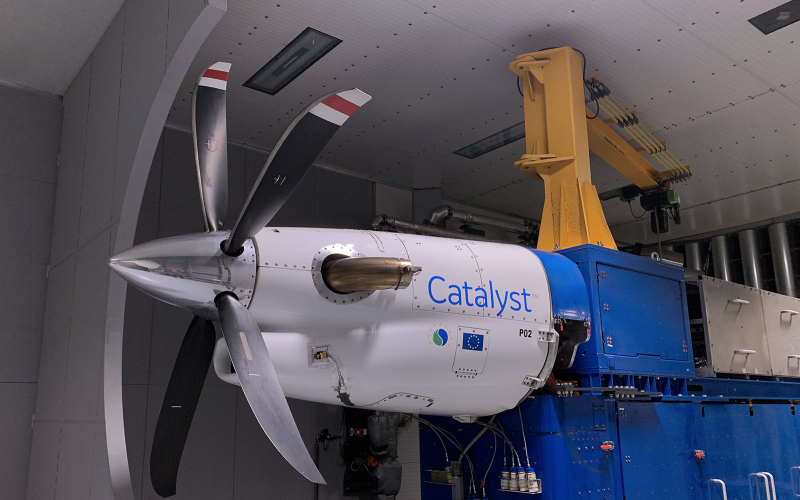Aviation
The propulsion that Defense needs
Riccardo Procacci speaks at the Defense Committee of the Italian Chamber of Deputies: with the crisis in civil aviation and opportunities on the military front, Italy will have to invest decisively in the aerospace sector through the NRRP.
Mar 2021
The National Recovery and Resilience Plan (NRRP) should not forget aerospace, grappling with the impact of COVID-19 on air transport and the possible effects on the national supply chain, which is strategic in terms of defense and security programs. This is the suggestion Riccardo Procacci, CEO of Avio Aero, an Italian company belonging to the American group GE Aviation, made to politicians when he spoke before the Defense Committee of the Chamber of Deputies, chaired by Gianluca Rizzo, as part of the inquiry into the planning of defense systems and the outlook for technological research, production, and functional investments to meet the needs of the defense sector.
The Situation.
“Unfortunately,” noted Procacci, “the draft of the Italian National Recovery and Resilience Plan, which we have been able to read in recent months, didn’t include any specific industry intervention to facilitate the recovery of the aeronautical sector and favor its competitive positioning in the face of the new innovation impulse driven by the ecological transition.” In these conditions, he warned, “even if the sector managed to survive, at the end of the pandemic, it would find itself facing asymmetrical competition from those countries that not only enabled the sector’s survival, but also implemented active investment instruments during the crisis.”
"Even if the sector managed to survive, at the end of the pandemic, it would find itself facing asymmetrical competition from those countries that not only enabled the sector’s survival, but also implemented active investment instruments during the crisis."
The Answer.
According to Avio Aero’s CEO, it therefore seems “fundamental that the government immediately assesses the most effective way to correct this shortcoming, in order to avoid the national civil aeronautics industry being penalized with lasting adverse effects, both in terms of competition with other European and global companies, and in terms of future strategic defense capabilities.” On this last front, meanwhile, the Defense Committee of the Chamber of Deputies has expressed its favorable opinion on the NRRP presented by the government, with several observations inviting the executive branch to “enhance” the contribution of the sector, including health, green and, above all, innovation.
The Tempest.
Beyond the NRRP, the focus is on major international programs. Avio Aero is on board the Tempest project for the sixth-generation aircraft promoted by the UK, with Italy and Sweden also taking part. The program will feature “technological content that will determine the future industrial capabilities of the aeronautical sector,” Procacci noted. The call is therefore to “enhance the Italian domestic industry to play an equal role alongside the UK industry in the propulsion segment”. At the moment, he noted, the multi-year Defense Planning Document for the three-year period 2020-2022 identifies resources for the preparatory phase within the Eurofighter program, but this “does not provide a solution for propulsion, for which discontinuity is needed” with respect to the fourth generation. According to Procacci it is therefore “urgent that a remedy be identified”, with “resources dedicated to technological maturity” to avoid being outstripped by Rolls-Royce, the British engine company already working on this area.
Towards the drone.
The same applies to UAVs (Unmanned Aerial Vehicles). Over the last decade, Avio Aero has been able to take on the responsibility of the whole systems and therefore to coordinate a European engineering team, designing a new turboprop engine with advanced technologies, entirely developed in Europe. This is the Catalyst engine, the first designed from scratches in the last half century for civil aviation, capable of "excellent performance" between fuel savings and operational performance. The Catalyst, now in advanced development and installed on its flying test bed, will also be available in a military version for applications ranging from trainers to aerial surveillance and reconnaissance drones.
The Catalyst engine is the first designed from scratches in the last half century for civil aviation, capable of excellent performance between fuel savings and operational performance
The focus on the supply chain.
About the “industrial spin-offs in support of the entire Italian domestic supply chain”: there are also more than a thousand companies throughout the Italian peninsula that work with Avio Aero, resulting in an estimated turnover of €400 million in 2019. “To achieve innovation, you need an ecosystem,” said Procacci, highlighting the company’s relationships with SMEs, research centers, and other entities linked “in a virtuous interdependence”.
Strategic activities.
Avio Aero “has been on the front line since the beginning of the COVID-19 emergency, making all its resources and capabilities available to help ensure both the security of our skies and emergency medical flights.” Procacci went on to say that “following the decree of March 22, 2020, we continued to carry out maintenance on military fleet engines at our Brindisi plant.” What’s more, “with a great sense of responsibility towards the community, our technicians voluntarily decided to continue to provide support activities uninterrupted, which also enabled emergency flights and the air transport of medical equipment.”
The original version of this article is by Formiche.net





